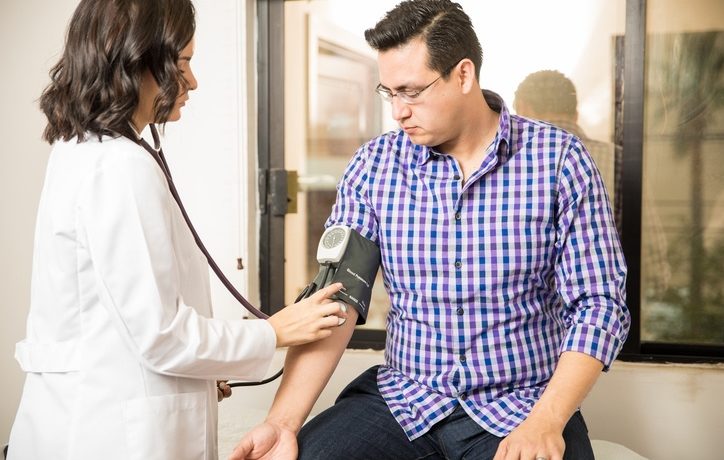10 Ways to Form a Lifelong Patient Care Partnership

Like any relationship, the patient care partnership is founded on communication. At base, as explained on Nursetogether.com, senders communicate messages to receivers, but clinicians are often under intense stress that weakens relationships. The following pointers can help overcome that stress and ensure high-quality care through strong partnerships.
1. Focus on Patients
As shown on the Health Affairs Blog, patient-centered care works to improve outcomes and satisfaction through strong patient care partnerships. Therefore, health care team members use clear and empathetic communication to provide support across various settings. In the process, they work to equip patients with the skills to prevent and manage illness on their own.
2. Center Relationships
Impersonal institutional culture can lead practitioners to ignore patient care partnerships. However, Goold and Lipkin noted that it is key to managing data, diagnoses, plans, and compliance. So, center relationships and increase patient comfort by getting to know them, their families, and their interests.
3. Set the Agenda
As Henbest and Stewart shows, centering patients orients healthcare around their specific concerns. In particular, practitioners should start by having patients list their issues and then collaborate on an agenda from most to least important. At that point, the two of you can create a plan of action together.
4. Listen Carefully
Reflective listening builds on the directed attention of active listening. Care providers specifically listen without interrupting and then reflect patients’ concerns back to them. Allowing people to tell their story will help you obtain information and, as shown by Clark et al. improve outcomes, behavior, and patient satisfaction.
5. Be Mindful
Communication’s increasing complexity can put heavy demands on providers’ attention, making it difficult to be conscientious in one’s work. On the other hand, mindfulness – or being fully present in one’s practice – can prevent errors and relieve stress for patients and practitioners, as Hutchinson and Dobkin demonstrate in their research.
6. Manage Emotions
Managing emotions is one of the most valuable communication skills when dealing with the difficult situations of modern healthcare. Kim et al. highlight empathy’s role in boosting trust, compliance, and satisfaction. Team members should thus identify, acknowledge, and respectfully address emotions.
7. Educate
For help in decision-making, patients require an understanding of treatments, consequences, and steps in healing. You should provide websites, reading materials, videos, and other resources to help patients learn more. As shown on the Health Affairs Blog, education generally reduces re-admission while raising moral support and mental stability.
8. Increase Access
Information technology provides one way to minimize wait times and otherwise boost health care efficiency. For instance, electronic health records give patients greater access to their health goals, needs, values, and preferences. As noted on Medscape, such technology challenges the physician’s traditional role and nurtures the patient care partnership.
9. Improve Facilities
Greene et al noted that medical facilities should be improved. From medical jargon used in signs to nurses’ stations that are situated oddly far from patients, these buildings are fundamentally designed around clinicians’ needs alone. Centering such spaces around patients can help create more empathetic environments that help patients feel involved in their health care.
10. Get Feedback
Providing and receiving feedback are reassuring activities, as shown in a study from Perspectives on Medical Education. Many clinicians survey patients and use the results to improve their communication and behavior. Such surveys also help patients trust their providers and feel more involved in their health.
With consistent practice, these tips can strengthen a patient care partnership – and improve care quality, safety, and efficiency. In the process, both sides of this partnership will better endure – and to improve the conditions of modern medicine.
—
Did you like reading this article? Subscribe!
![]()
3 of the Best Social Media Tips for Medical Students

Social media provides ever-more essential opportunities for promoting health care. From blogging to tweeting, networking, and everything in between, medical professionals can not only reach out to current and potential patients, but can also define their online reputation. Yet, it is important to follow guidelines like those provided by the American Medical Student Association because social media can also be a minefield of potential conflicts. The three points below are some of the best social media tips, each of which shows how medical students in particular can protect themselves and their future careers through careful, professional, and ethical behavior online.
Practice Professionalism
As a representative of the medical profession, you should maintain ethical conduct while using Facebook, Twitter, and related media. Take the time to consider the short and long-term consequences of your actions, especially in terms of potential impacts or viral spread. You should specifically assess whether you would say the words in your posts aloud in front of your boss or professors. Since around half of all employers in the field will review your social media profiles, according to the Journal of Graduate Medical Education, your reputation is on the line. Accordingly, be honest about your certifications, provide disclaimers about your position as a student, and avoid political advocacy. If you feel obligated for the latter, then speak with a university representative about potential complications.
Stay Separated
Another one of the best social media tips for medical students is to maintain separation between your different lives. Your social media profile is much more public than your everyday life, but few US medical schools have clear policies about appropriate conduct online, as noted by Kind et al. You should keep your presence online as a student separate from your personal profiles to prevent any potentially disrespectful, defamatory, vulgar, libelous, or inflammatory words or images. As a representative of the medical field, you must respect all people, no matter their age, ethnicity, gender, orientation, characterization, or marital or military status. At the same time, you should avoid requests for medical advice and minimize all interaction with patients past or present. Perhaps most importantly, be sure to read the Terms of Use and Privacy Policy as it continuously evolves to ensure that you maximize your security and privacy.
Post Carefully
Similarly, and perhaps most importantly, never discuss confidential information online. Remember to follow the standards of patient privacy and confidentiality as laid out in the Health Insurance Portability and Accountability Act (HIPAA) and Family Educational Rights and Privacy Act (FERPA). As Kevin Pho, MD, founder of KevinMD.com points out, you should be especially sure to protect patient privacy and avoid discussing specific cases. Otherwise, should any patient recognize themself in your online posts, there will be legal and professional ramifications. This last social media tip also covers the restrictions of specific social networking sites, apps, and blogs. It is important to be aware of copyright laws surrounding questions of the right to use content, from photographs to videos and much more besides.
Following the tips above will help ensure that you get your career off to a solid start – by avoiding potential controversies. Although social media feels fun, it has the potential to both help you reach out to the broader public and alienate you from them. Remember that your posts live forever, so any rants and raves you post today will still be around when you’re searching for a job. Potential employers will search your digital pasts, so make sure that you maintain a respectful, professional, and ethical online presence.
—
Did you enjoy this post? Consider subscribing!
![]()
How to Build and Maintain a Winning Hospital Community

It doesn’t matter if you are considered to be a large healthcare system, a community hospital or a solo practitioner. What really matters is what sort of things attract and keeps healthcare talent happy. And, when it comes to career happiness, healthcare professionals want to work in winning hospital communities.
Here’s a look at nine of the most important characteristics of a great hospital community, according to the the job board, Monster.com:
1) Positive values. All great organizations have a mission statement that clearly outlines goals, demonstrates an unwavering commitment to quality and reflects a positive spirit.
A positive mission statement reflects a company’s values, which, over time, inform every action and permeate every action.
2) Relaxed atmosphere. Healthcare is a serious business, but that doesn’t mean the people charged with delivering it can’t look forward to coming to work, feel appreciated once they get there and treat one another with respect throughout the course of their shifts.
As a 2013 story in The New York Times pointed out, people who work in a relaxed atmosphere perform better.
3) A shared commitment to excellence. Excellence surrounds itself with excellence. A rising tide lifts all boats. Winning is more fun. These cliches might be a bit tired, but they are also true. When a hospital commits to excellence and accepts nothing less, everyone performs better, has more fun and the hospital community thrives.
4) Communication. It has been said that there are no secrets to success. And, while there are a lot of ways to interpret the axiom, it’s probably most accurate to infer that organizations that succeed share information in open, authentic and consistent ways. They don’t keep secrets and they actually try to over-communicate.
5) Empowerment. Employees who feel empowered help build a winning hospital community. The are more likely to make smart decisions and act autonomously, but with respect for the organization’s values when necessary. They are also more likely to go the extra mile, help their colleagues and put the organization’s best interests before their own.
6) An appreciation for humor. Employees who laugh are less stressed, more productive, willing to be creative and collaborate and also more analytic–if you believe an article published in the Harvard Business Review that quotes researchers out of Wharton, MIT and the London Business School.
7) Compassion. Hospitals that are committed to treating their employees with the same level of compassion they expect their employees to show patients perform better. It’s as simple as that. Employees–whether physicians, nurses, nurse practitioners or physician assistants–are more likely to go above and beyond for organizations that treat them with respect and compassion.
8) Recognition. To those who do not work in healthcare every day, working in a hospital seems to come with unlimited rewards. Babies are born, broken bones are healed, cancer is treated. But for physicians, nurses and others, it is still a job–an important job, but still a job. And, everyone who does any job wants to be recognized for exceptional performance. The truly healthy hospital community is the one in which recognition is given to those who do great work.
9) Balance. Work-life balance is a big topic of conversation in healthcare. With the shortage of physicians, nurses, physician assistants and other hospital employees, everyone seems to be asked to do more. Mandatory overtime, extra shifts and short staffing take their toll on hospital employees. That’s why the hospitals that truly have winning cultures take care to ensure a healthy work-life balance.
—
Elliot Health System is a community hospital that is its own hospital community. Apply to join us.
![]()
Top Healthcare Apps for New Hampshire Nurse Practitioners

Well, that didn’t take long.
Five years ago there were about 600,000 apps available for download in the Apple App Store–and maybe a couple dozen for nurse practitioners. Today, Apple offers nearly 2 million apps, of which there are hundreds that you could use to be a better nurse practitioners.
Too bad your smartphone doesn’t have more memory!
Yes, there are a lot of great apps out there that can make you more more effective and efficient. But, you won’t be able to use them all, so take a look at this list of the top healthcare apps for nurse practitioners:
The Sanford Guide to Antimicrobial Therapy
When you need clear, concise, current and reliable information about an infectious disease, you need the Sanford Guide to Antimicrobial Therapy. The long-trusted reference has commonly been used in its textbook form, but the app is every bit as reliable–and it’s updated monthly to make sure that the latest research findings are only a swipe away.
Learn more about the Sanford Guide and why it is one of the top healthcare apps for nurse practitioners.
The Electronic Preventive Services Selector
Leave it to the U.S. Department of Health and Human Services to develop one of the top healthcare apps for primary care providers who need to find the right screening, counseling and preventive medication services for patients. But, that’s exactly what the Electronic Preventive Services Selector does–and it does it well. After all, it does come from the government agencies responsible for protecting the health of all Americans.
Learn more about the app and how it lets you search based on specific patient characteristics such as age, sex and risk factors.
UpToDate
It’s a clinical practice guide, medical calculator, drug interaction checker and research resource all wrapped up into one easy-to-use app. It’s UpToDate, and it’s a must-have for any nurse practitioner working in a busy hospital or clinic. It also includes links to more than 1,500 printable patient-education handouts.
Learn more about UpToDate and how it can help make you a better nurse practitioner.
VisualDx
There was a time in the not-too-distant past when referring to your smartphone during an exam would have been frowned upon. Not anymore, thanks in large part to apps like VisualDx. It was created specifically to be used at the point of care. After you download it, you’ll be able to search by symptom, chief complaint or diagnosis. It’s incredibly useful when it comes to addressing dermatological conditions, reactions to medicine and other symptoms with visual manifestations.
Learn more about VisualDx and check out the high-resolution images it delivers.
CDC Influenza
Flu season typically runs from September through May, so an app that provides the most up-to-date information about flu activity up and down the East Coast and across the country is almost always practical. The CDC Influenza app from the U.S. Centers for Disease Control and Prevention will provide you with the latest government recommendations related to vaccinations and antiviral treatments. It also offers videos of national experts providing tips and official information, CDC-designed posters, and handouts to give to your patients.
Learn more about the CDC Influenza app.
Download the top healthcare apps today
The pace of innovation seems to increase every day–and that’s a good thing for nurse practitioners. Today, you have the opportunity to download hundreds of apps that can help you perform your job duties in a more efficient and effective manner.
Do it.
Then keep watching for what might come along tomorrow. Apps may have been a novelty a few years ago, today they are an important part of the job.
*Elliot Health System does not endorse specific technology highlighted in blogs – all references are for the purpose of awareness of new medical technology only.
—
Did you like this article? Consider subscribing to receive more like it.
![]()
Physician Apps that Help Increase Patient Communication

It has been said that the future of healthcare is resting firmly in your hands. And, thanks to physician apps, it just may be true.
According to a report by the QuintilesIMS Institute, there are currently more than 40,000 healthcare apps available for download from the United States Apple iTunes app store. Some are physician apps that provide easy access to important information and resources. Some are designed to help patients prevent illness and injury. Others are engineered to improve and increase patient communication.
As physicians know, communication is critically important when it comes to keeping patients healthy. It improves diagnostic accuracy, advances the rate of adherence and leads to increased patient satisfaction.
And, thanks to certain physician apps, the ability to improve patient communication is resting firmly in the palm of your hand.
Here’s a look at five of the best physician apps for increasing patient communication:
1) Doctella
It happens every day. A patients walk out of their doctors’ offices and immediately wishes they’d have asked another couple of questions about their upcoming surgical procedures.
A few may circle back and try to catch you in your office. Some might call and ask a nurse. Most suffer in silence, worrying about questions and concerns that likely could have been easily ameliorated if they had only thought to ask.
Doctella is a mobile app designed to provide patients with a list of questions to ask their physicians before surgeries and procedures. It’s free and effective–and can be recommended to patients prior to procedures.
2) Touch Voice
As the country’s population ages, more people are living with speech impairments. In fact, nearly 18 million U.S. adults report having problems with their voices each year, according to the National Institute on Deafness and Other Communications Disorders.
The Touch Voice app is a medical grade speaking app designed to help patients communicate with physicians through speech synthesis.
It’s a valuable app for physicians caring for stroke patients, people with ALS or traumatic brain injuries, cerebral palsy, MS, laryngeal cancer, Parkinson’s diseases and other conditions that affect the ability to speak.
Learn more about the Touch Voice app.
3) Canopy Speak
According to the United States Census Bureau, there are more than 25 million people living in the country who speak little or no English.
Language barriers in the emergency department can be deadly. Thankfully, there is a physician app called Canopy Speak, which is a mobile library of thousands of medical phrases that can be translated into dozens of different languages. The app also allows for live connections with medical interpreters.
And it’s free.
Learn more about Canopy Speak.
4) VisualIDX
It’s been said that a picture is worth a thousand words, especially in the exam room.
VisualIDX allows you to quickly search by diagnosis or drug-induced adverse reactions by medication to find photos of various conditions. It’s a tool that can improve your diagnostic accuracy and help educate patients about their conditions while in the exam room.
You spend a lot of time and words explaining the condition, but sometimes a picture is simply more effective.
5) Visual Anatomy
Visual Anatony is another picture-based app that is most commonly used by students and can help you educate your patients. Its detailed images are great for helping patients understand conditions, ailments and common injuries involving bones, ligaments and muscles.
Again, sometimes a picture is worth more than words during exams.
Learn more about the Visual Anatomy app.
*Elliot Health System does not endorse specific technology highlighted in blogs – all references are for the purpose of awareness of new medical technology only.
—
Did you like this article? Read more like it by subscribing.
![]()
Physician Assistant Employment within the Family Medicine Field

Has there ever been a better time to be a physician assistant?
It’s a rhetorical question because everyone’s circumstances and situations are different. But, there’s no doubt that right now that it is a great time to be seeking physician assistant employment.
Take a look at these pieces of information, recently taken from from popular headlines:
- “Nurse Practitioner, Physician Assistant Salary Grew in 2016“
– RevCycleIntelligence.com - “Role of Physician Assistants Expanding in Hospitals and Beyond“
– The Baltimore Sun - “Physician Assistant Demand Rivals that of Primary Care Doctors“
– Forbes
Yes, physician assistants are making more money, adding more value and are in higher demand than ever. So maybe it wasn’t a rhetorical question. Maybe the answer is a clear: There has never been a better time to be a physician assistant.
Especially if you’re working in the family medicine field.
Family medicine is growing by leaps and bounds. According to the U.S. Health Resources & Services Administration, the country will need more than 20,000 primary care physicians in 2020.
That means they’ll also need more physician assistants.
In fact, the U.S. Bureau of Labor Statistics, physician assistant employment opportunities were expected to grow by a whopping 30 percent between 2014 and 2024. That’s much, much faster than the average for all occupations–and much of the demand was expected to be driven by the need for preventive care (family medicine).
Physician assistants are in such high demand that 75 percent of them get multiple job offers, according to the American Association of Physician Assistants (AAPA).
So, yes … now is a good time to be seeking physician assistant employment. And, it’s an every better time to work in a family medicine setting.
Here’s a look at three key reasons why you should consider using your skill, experience and expertise in family medicine:
1) You get to do it all. One of the nice things about being a physician assistant in a family practice setting is that you never know what type of case is going to walk through the door.
From rashes to common colds to symptoms of serious illness and disease, physician assistants are on the front lines of diagnosing and directing the care for a wide variety of cases.
In family medicine, your job can include diagnosing and treating illnesses and injuries, making hospital rounds, managing chronic conditions, ordering and interpreting lab tests, performing minor surgical procedures and an array of other activities.
2) Independence. While there is a lot to be said for working as part of a team, autonomy can be equally as awesome–and physician assistants who work in a family medicine setting tend to have a lot of it.
In fact, the AAPA reports that about 54 percent of all physician assistants working family medicine work in solo or group physician practices. This means they have a greater level of independence when it comes to diagnosing and treating injuries and illnesses.
3) Connections. Being a physician assistant in a family medicine setting is like being a small-town doctor. You will likely have a panel of patients for which you provide primary care, address urgent care issues and manage chronic diseases.
You’ll build lasting connections with your patients that allows you to have a deep and meaningful influence on their short- and long-term health. Many physician assistants find that the connections they are able to forge with patients in a family medicine setting is the most rewarding aspect of the job.
Now is the time
It’s possible that there has never been a better time to be a physician assistant–especially in a family medicine setting. Apply to Elliot Health System now and make the most of the opportunity.
![]()
5 Ways to Impress Recruiters at a Physician Job Interview

An impressive resume may get you in the door for your dream job, but you’ll still have to ace the physician job interview. The best first step is to list out your ideal position pay, benefits, location, practice type, patient load, and philosophy. From there, using the following tips will help you demonstrate that your skills and experiences make you an ideal fit for the given hospital or medical facility.
Prepare
Many candidates assume their resumes speak for themselves, but interviews give potential employers a sense of who you are off the page. So, as The New England Journal of Medicine pointed out, you should prepare well ahead of time in order to ensure that you portray yourself effectively. Showing up early and talking with office staff or noting interesting photos or honors will help spark conversations later. Both show initiative and engagement, and you can also take that extra time to review your resume and rehearse responses.
Be Consistent
In order to learn more about you recruiters tend to utilize performance-based and behavioral questions, like those provided by CompHealth. Employers hope to see whether you have the compassion and quick-thinking skills to handle working in their facilities. At the same time, any inconsistencies between your interview and your resume can lead to questions about your suitability for the position. So, be sure to regularly update your CV and proofread it before submitting. Then, during your interview, keep a copy on hand for your own reference.
Speak Honestly
You should also answer questions honestly during the physician job interview. Admit when you don’t the answer, and use it as an opportunity to explain your beliefs or highlight your background. Interviewers may ask a variety of tricky questions, as Health eCareers noted, but those about past work experiences are especially difficult. You should avoid badmouthing previous employers and instead use such questions to describe specific difficulties and how you overcame them – showcasing your skills and abilities instead.
Dress Respectably
Interviewees should dress professionally, as noted by the American College of Physicians. Avoid busy, tight, or revealing clothes – as they can lead to questions about credibility. Other guidelines include:
- Business suits, with skirt and/or tie
- Neatly trimmed or styled hair to avoid distraction
- Subtle make-up, with any visible tattoos covered
- Well-trimmed nails with no wild nail polish
- Little to no jewelry, generally limited to one ring and non-dangling earrings
It is also important to handle yourself respectfully; be polite, smile, look the interviewer in the eyes, and shake hands firmly. For group interviews, scan the room, holding eye contact as you speak.
Ask Questions
One of the most important ways to impress your interviewer is to ask the right questions, as a recent article in Medscape pointed out. To start, research each facility so that you can craft informed responses to questions about your fit with their mission, goals, etc. Then, create a list of potential questions, and use them to show your interest in joining each institution’s team. You could even focus on the top three reasons that physicians leave positions, namely culture, group decision-making, and supervisor attitudes and expectations.
Knowing what you want from your future position is essential to succeeding at the physician job interview and overall search. However, you should also remember that medical facilities are not looking for the ‘best’ physician – but for the one that best aligns with their institution and culture. You can always boost your odds by sending a thank-you letter, though, usually within 2 business days of your interview, as this shows your continued interest in the position.
—
Are you looking for a new physician career? Consider Elliot Health System!
![]()
The Top 10 Best Apps for Physicians On-the-Go

If you’re like most physicians, you’re busy.
So let’s not waste any time introducing you to the 10 best apps for physicians on-the-go:
1) Doximity. It’s like an ultra-secure social media site for physicians. Connect with colleagues across the country or around the world. Receive the latest medical journals on your smartphone. And send HIPPA-secure data to patients–all from the palm of your hand.
2) Read by QxMD. It’s a one-stop shop for finding new research, exceptional topic reviews and answers via PubMed. One convenient and easy-to-use interface allows you to create your own personalized medical journal populated only with articles on topics which you are interested in.
3) Figure 1. It’s the app designed for on-the-go physicians who find themselves facing hard-to-diagnose disorders. Figure 1 allows you to research rare conditions, novel treatments and teaching cases from near and far. It also allows you to connect with more than 1 million verified healthcare professionals who can provide instant feedback.
4) Medscape. It’s been said that the best things in life are free, and that’s certainly the case with Medscape. This app is quickly becoming ubiquitous because of its “Drug Reference Tool,” which allows you to meare proper doses and manage many different medicines.
5) My Chart. This is one of the best apps for physicians as well as one of the best apps for patients. My Chart allows patients to schedule appointments, ask questions and pay bills. It allows physicians to review lab results, update patient information and proactively contact patients.
6) Epocrates. Physicians like this app because it makes it easy to review drug prescribing and safety information, find dosage data and research pharmacology. But they love it because Epocrates also allows them to connect with other physicians for consults and referrals.
7) NEJM This Week. The New England Journal of Medicine has been using the United States Postal Service to deliver physicians the best biomedical science and clinical practice research for more than 100 years. Now it uploads it directly to your smartphone. NEJM This Week makes sure you have in your hands the latest research findings as well as videos of interesting medical procedures. At this time though, it’s only available on iOS.
8) Isabel. It’s full name is the Isabel Differential Diagnosis (DDx) Generator, but most physicians simply refer to it as “Isabel.” It’s one of the 10 best apps for physicians because it provides a proven way for doctors to double check their diagnoses against results validated by peer reviewed studies. Isabel includes more than 6,000 disease presentations and symptoms as well as the ability to search by age, gender and even travel history.
Download the Isabel Differential Diagnosis (DDx) Generator.
9) DynaMed Plus Mobile. If you are a fan of Dynamed Plus, you will love DynaMed Plus Mobile because you’ll be able to bring it with you wherever you go. the Dynamed Plus mobile app provides an enhanced search function, intuitive web design, seamless updates and simple navigation. It also allows you to access content when you are offline, bookmark frequently used data and favorites, and write and save notes on topics of particular interest. If you use Dynamed Plus, you’re going to want to download the mobile app.
10) Virtual Practice. It’s a safe and HIPPA-secure way for you to allow patients to consult and follow up with you online. It comes with a patient portal and custom domain, video chat and remote patient monitoring.
Download the Virtual Practice App.
*Elliot Health System does not endorse products that are featured in blogs. They are merely awareness pieces that feature new medical technology.
—
Are you on the hunt for a new provider career? Save time and choose Elliot Health System!
![]()













Recent Comments